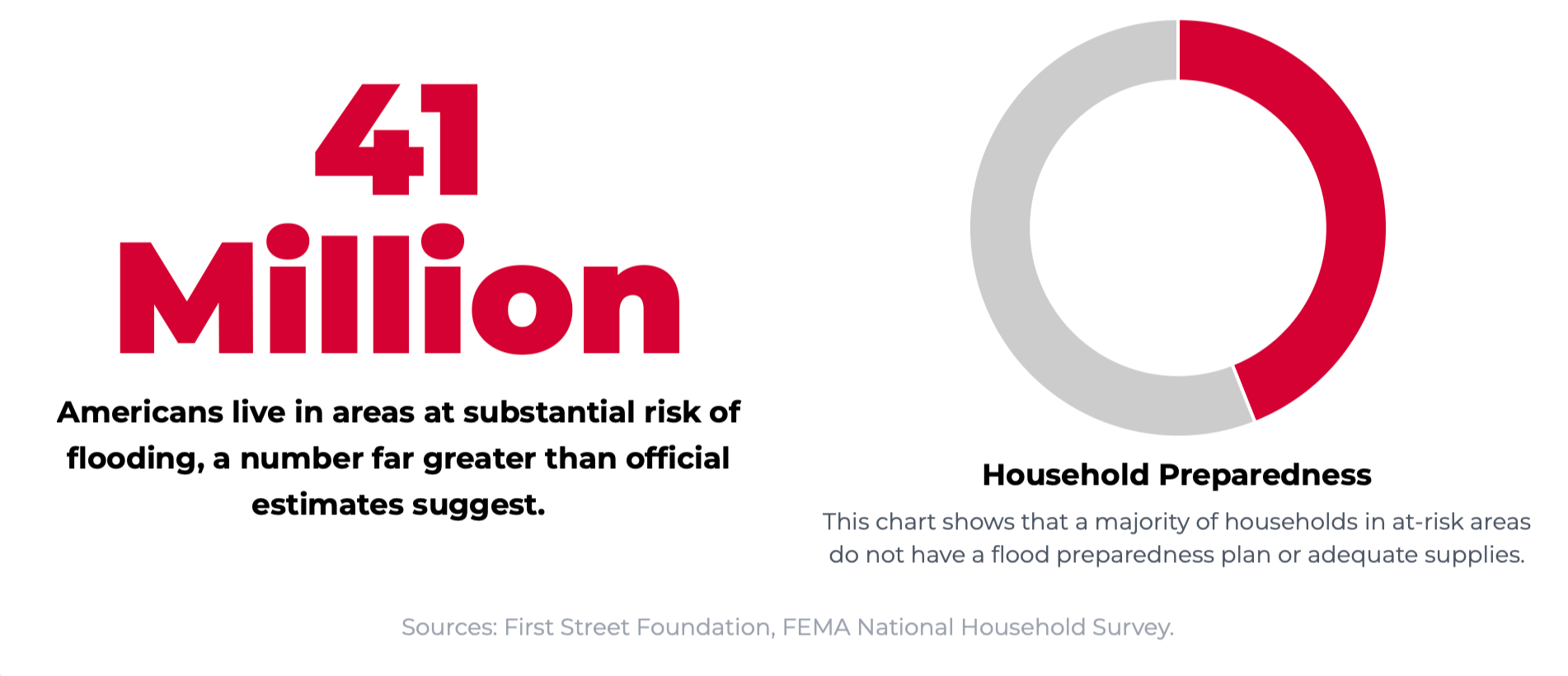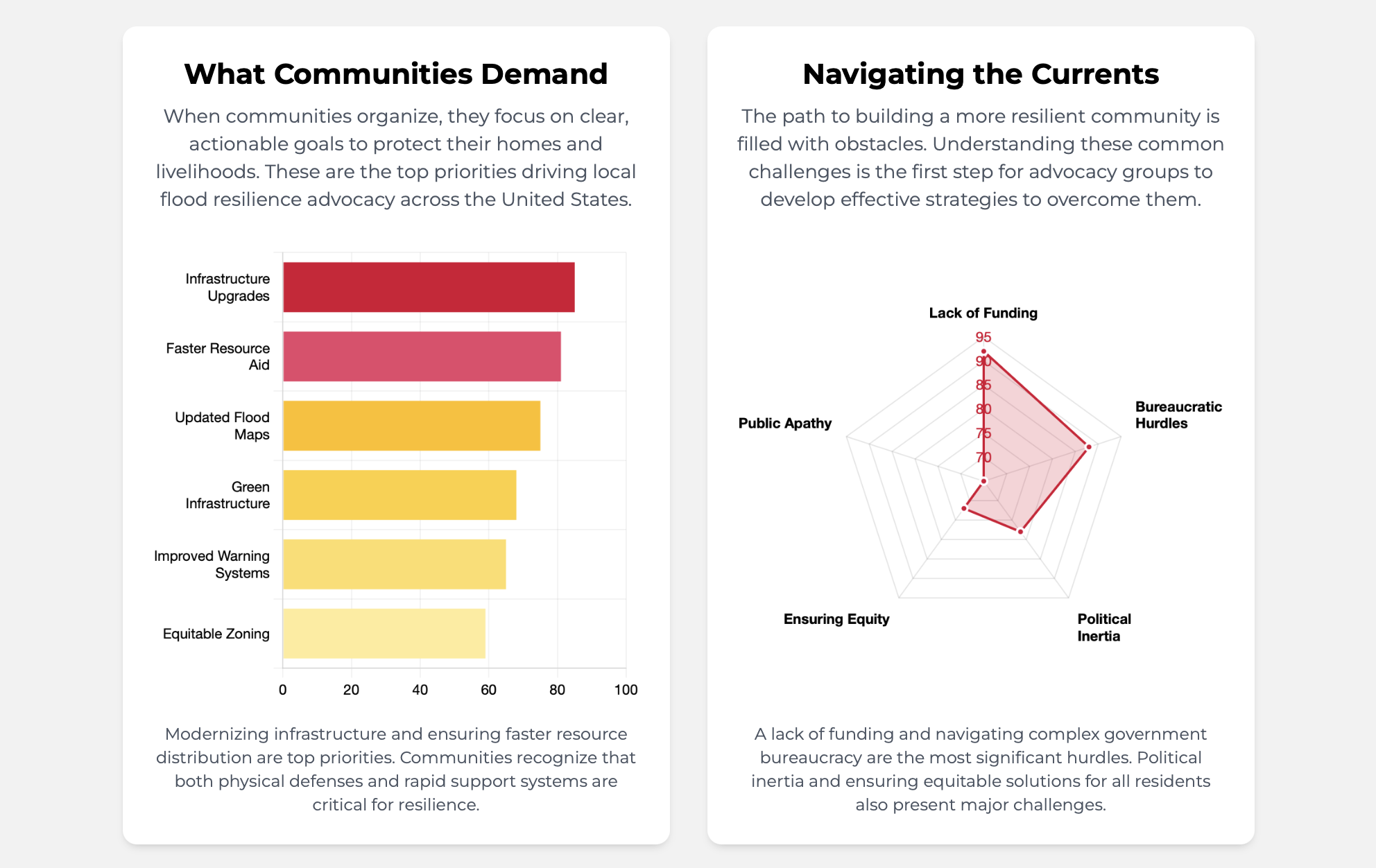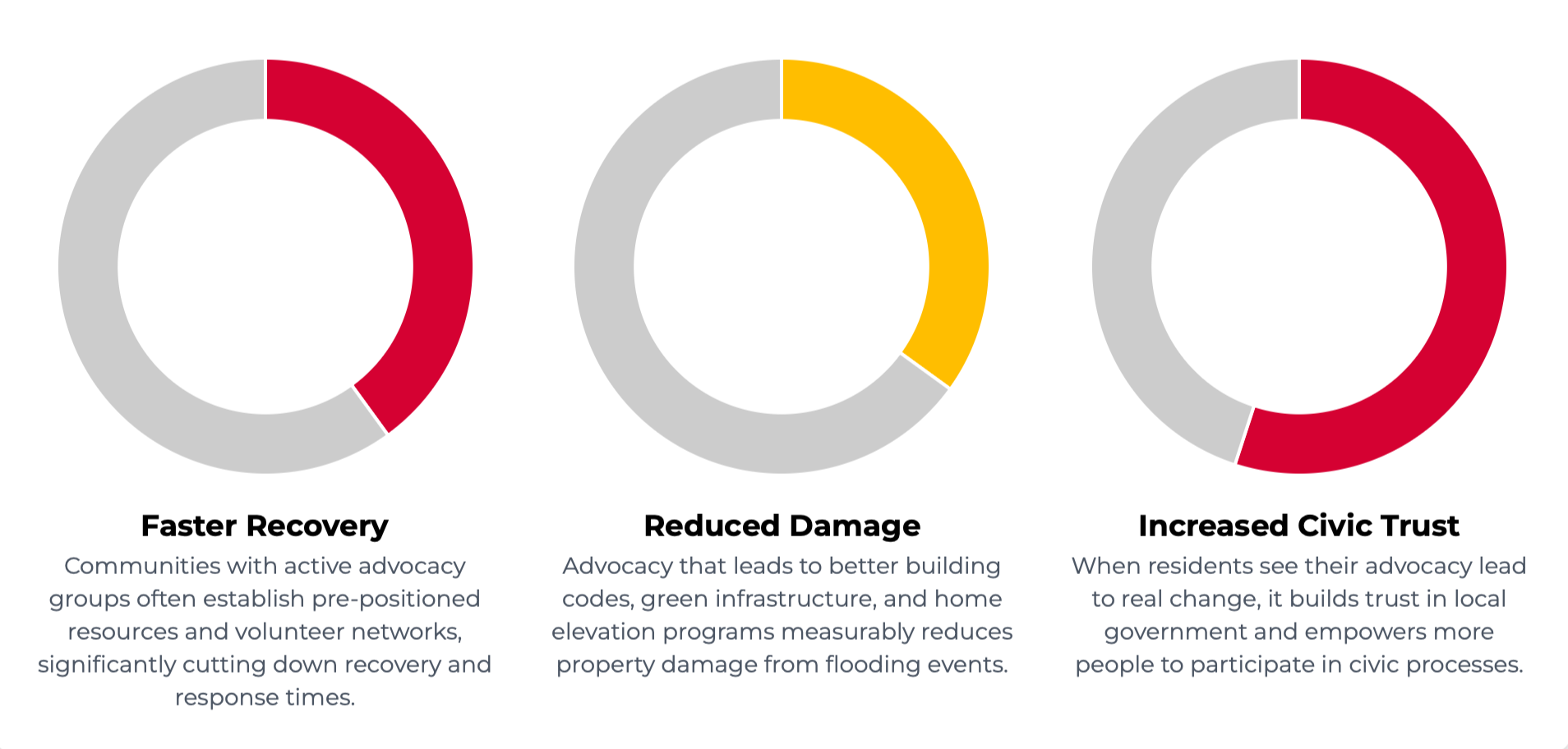Riding the Wave of Change: How Community Advocacy Builds Local Flood Resilience in the U.S.
The United States faces a rapidly escalating flood risk, yet a persistent and dangerous gap exists between high-level federal frameworks and the on-the-ground reality of household preparedness. National surveys reveal a stark preparedness deficit, with a significant portion of households in high-risk areas lacking a flood plan or adequate supplies. It is within this gap that community advocacy has emerged as the critical force for demanding more responsive policies and faster, more equitable distribution of preparedness resources.
What Prepared Communities Demand
When communities organize, they focus on clear, actionable goals. As research shows, modernizing infrastructure and ensuring faster resource aid are top priorities for local flood resilience advocacy. This demand for faster aid often stems from the "sandbag problem": when a flood is imminent, centralized government distribution of resources is often too slow to meet neighborhood-level needs in time.
This is precisely the challenge ESR was designed to solve. Our rapid-deployment system is the direct answer to these logistical hurdles, transforming a multi-day process into a response measured in hours and empowering municipalities to meet this critical community demand.
The Ripple Effects of Action
The rewards of successful advocacy are profound, creating a ripple effect of positive change. When residents see their advocacy lead to real change, it builds trust in local government and empowers more people to participate in civic processes.
Successful advocacy also leads to faster recovery times, as communities with active advocacy groups often establish pre-positioned resources and volunteer networks. This is a core principle of the ESR model, where proactive contracts ensure our resources are ready before they are needed.
You Don't Need to Be an Expert to Make a Difference
Protecting your community from flooding starts with simple, proactive steps. Your voice is a critical part of the solution, and effective advocacy often begins with small, local actions. Here are a few ways you can become a flood advocate in your community.
1. Know Your Personal Risk
The first step is understanding your own situation. Visit FEMA’s Flood Map Service Center online to check your address and learn about your home's specific flood risk and elevation. Being informed about your personal risk is the foundation for effective advocacy.
2. Join the Public Conversation
Attend local city council or planning meetings. These are public forums where you can listen and speak. Asking informed questions about your community's current flood mitigation plan is a powerful "insider tactic" that puts the issue on the agenda for local leaders.
3. Plan with Your Neighbors
Community organizing is a "bottom-up" process that builds collective power. Organize a small meeting on your street or in your neighborhood to create a shared emergency plan and identify vulnerable residents who may need extra help in a flood event.
4. Advocate for Modern Solutions like ESR
When you speak to your officials, it's powerful to not only raise a concern but to also point toward a proven solution. You can advocate for a faster, more efficient plan that moves beyond slow, manual shoveling to deliver sandbags to communities at risk.
To make this step easier, ESR provides a free advocacy tool with a pre-written letter to help you contact your local leaders and request a modern, rapid-deployment solution for your community.







